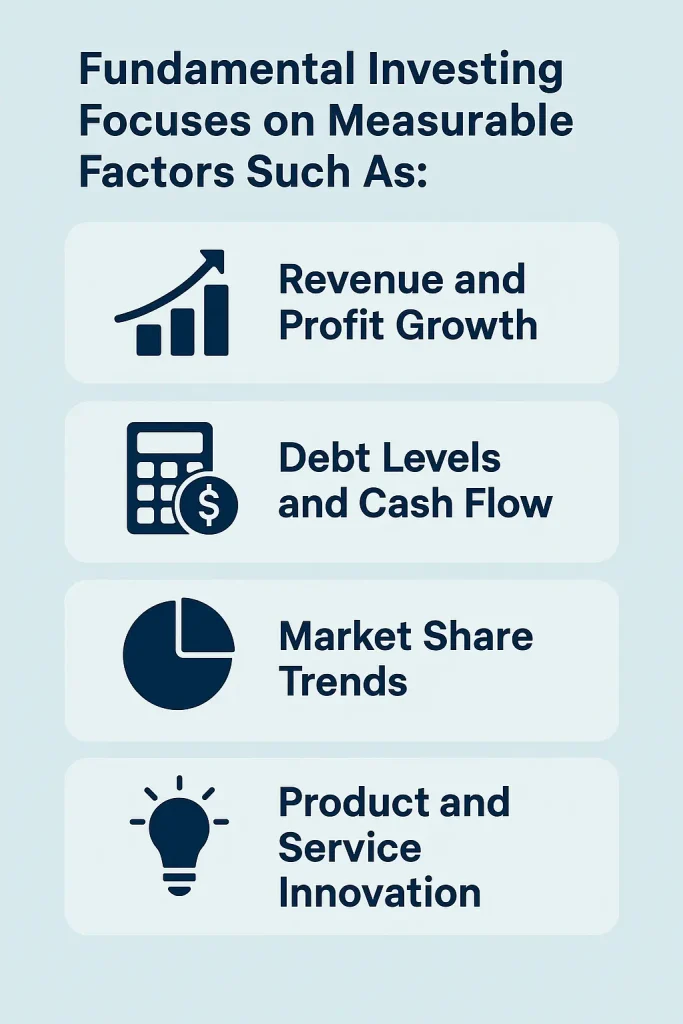If you manage less than $50 million, or simply invest your own money, you have a unique advantage that many large funds don’t.
You can move in and out of stocks quickly, even monthly, without causing major market ripples. That flexibility can be far more effective than trying to predict the next big macroeconomic shift.
In this post, I’ll explain why focusing on fundamentals and technical analysis can be more practical than macro forecasting, how sector selection plays into long-term success, and why tuning out some media noise can improve your investing decisions.
The Problem with Macro-Driven Investing
Large macro hedge funds try to profit from predicting broad economic trends like interest rate changes, currency movements, geopolitical events, and more.
While there are standout exceptions like Stanley Druckenmiller’s fund, the truth is that many macro funds struggle to consistently beat the S&P 500.
Why? As Warren Buffett and Howard Marks have often pointed out:
Macro factors are extremely important, but they’re not fully predictable.“
In the short term, macro events can drive market swings. But over the long term, company fundamentals matter far more. Trying to consistently forecast macroeconomic shifts is incredibly difficult, even for seasoned professionals.
Why Fundamentals Are More Reliable
It’s far more practical (and often more profitable) to analyze and invest in companies with strong balance sheets, steady earnings growth, competitive advantages, and favorable technical setups.
Fundamental investing focuses on measurable factors such as:
- Revenue and profit growth
- Debt levels and cash flow
- Market share trends
- Product and service innovation
Unlike macro predictions, which can be derailed by unexpected events, fundamentals give you a concrete basis for decision-making.
Staying Aware of Macro Without Relying on It
To be clear, I do keep up with macroeconomic and geopolitical developments. Understanding global events helps me gauge which sectors might face headwinds or tailwinds in the short term.
However, macro data doesn’t determine my final investment decisions. I use it as background context, not the foundation of my strategy.

Sector Analysis: A More Practical Approach
If you want to increase your odds of success, focus on high-growth sectors. These industries tend to offer organic growth potential that can compound over time:
- Artificial Intelligence (AI) – Transforming industries from finance to healthcare.
- Cybersecurity – Demand grows as digital threats evolve.
- Energy and electricity – Driven by global electrification and renewable energy adoption.
- Financial technology – Disrupting traditional banking and payment systems.
Even if a recession temporarily slows these areas, their growth typically resumes afterward.
Opportunities Beyond Hot Sectors
Not all great investments come from trendy industries. Sometimes, standout opportunities appear in unexpected places: a restaurant chain with a unique concept, a consumer brand that wins over customers, or a service that disrupts an outdated model.
The beauty of capitalism is that innovation never stops. Your job as an investor is to spot those emerging winners early and manage your risk wisely.
Avoiding the Media Hype Trap
Financial media, whether it’s CNBC, Bloomberg, or a popular investing podcast, can be informative, but remember: their goal is to keep your attention, not necessarily to make you a better investor.
They often present every global issue as if it’s an immediate crisis for your portfolio. Constantly reacting to this noise can lead to poor decision-making.
Instead, keep your focus on the factors you can analyze and control: fundamentals, technicals, and smart portfolio management.
Consistency Wins
Many investors also like to ladder their options—staggering expirations across several months instead of placing all hedges in a single date.
This spreads timing risk and can smooth costs, because you’re not forced to renew every contract at once. If volatility rises, some of your longer-dated protection may gain value even as shorter-dated positions expire. The goal isn’t perfection; it’s building a routine that reduces surprises.
Finally, track your results with a simple post-trade journal. Note why you opened the position, your planned exit, actual outcome, and what you’d do differently next time.
Reviewing a handful of notes each month reveals patterns—like overpaying for protection or selling calls too close to the stock price—that you can fix quickly. Small improvements, repeated, compound into better risk control and more consistent returns.
Related posts
- Is It Better to Invest in Individual Stocks or Stock Indexes? — A clear, side-by-side look at costs, risk, diversification, and when each approach makes the most sense.
- Why a Systematic Approach to Investing Reduces Emotions and Improves Results — Simple rules, checklists, and rebalancing routines that keep you consistent when markets get noisy.
Final Thoughts
If you have the agility to rotate your portfolio quickly, you can take advantage of short- to medium-term opportunities that larger funds can’t easily pursue.
In my view, the most important factors to focus on are:
- Company fundamentals – The long-term driver of stock performance.
- Sector trends – Where organic growth is most likely to occur.
- Innovation – The ability of a company to adapt, disrupt, or expand into new markets.
So, what about you? What do you believe are the most important factors to watch in today’s market?
Disclaimer: This article is for informational and educational purposes only. It does not constitute financial, investment, or legal advice, and should not be taken as a recommendation to buy, sell, or hold any asset. Always conduct your own research and consult with a qualified professional before making any financial decisions. The author and publisher are not responsible for any actions taken based on the information provided in this content.
